DRY CASE- MASONBORO BACKPACK DRY BAG
As a Special Forces Soldier, I spent a good deal of time on and in the water conducting maritime operations. If there is one thing I learned, it is that the sea is unforgiving on both man and equipment and I’ve seen the toll it can take on both. So if keeping your equipment dry is important to you, you clearly want a product that can do just that.
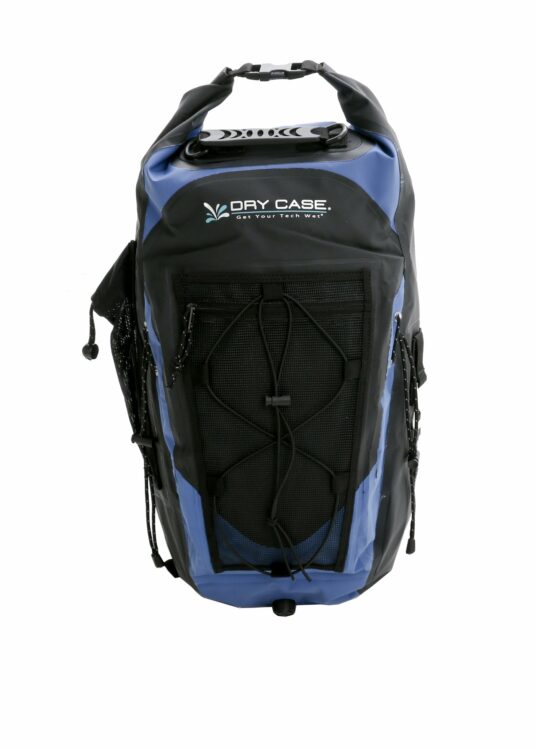
The Masonboro backpack from DRY CASE is a combination 35L dry bag and backpack. It utilizes the typical roll down design of most dry bags on the market, with the exception that it has several additional features on the outside of the bag that set it apart.
BLUF: The Masonboro dry bag is a recreational grade dry bag that is slightly on the high side price wise compared to similar backpack dry bags available. If you require a professional guide/expedition quality product, the Masonboro is not recommended. Some of the external features on the Masonboro dry bag may be of limited use to users due to their design limitations. For all other recreational activities, the Masonboro will provide the level of waterproof protection expected from a dry bag.
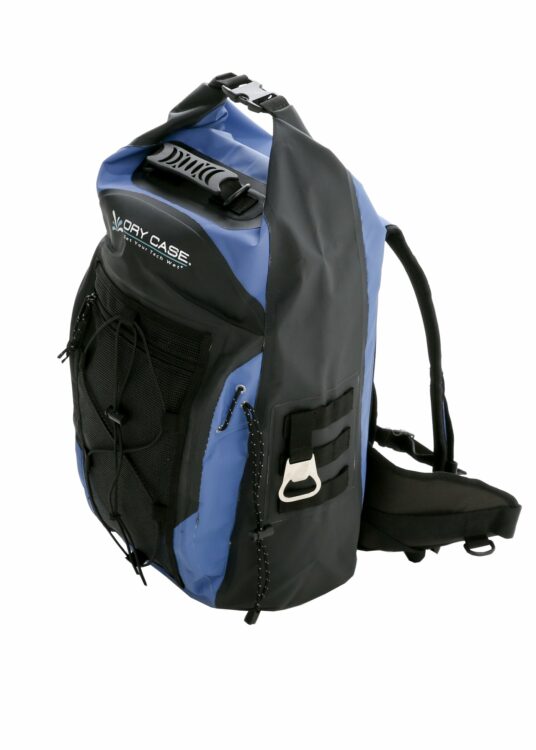
The first feature that sets it apart is the shoulder straps, grab handle and padded waist strap that allow you to carry it like a backpack. The Masonboro uses a padded back and waist strap that provides some comfort from the load and surprisingly, didn’t absorb or retain water after being fully submerged. The shoulder straps adjust like all typical backpacks and utilize plastic hardware, as does the waist belt. The one peculiar feature noted was that the entire shoulder strap and waist belt system feels like it was sized for a child or small adult, as the waist belt tends to ride more along the bottom of ones ribs than on the actual waist line. Because of this, it is not recommended that very heavy loads be carried, as it will cause discomfort. While it won’t win any comfort awards, it is more than adequate for this type of bag and its intended recreational use.
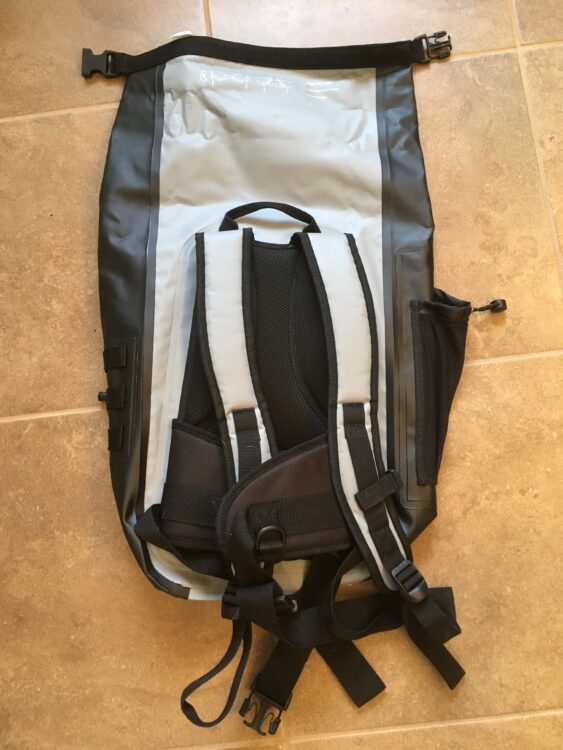
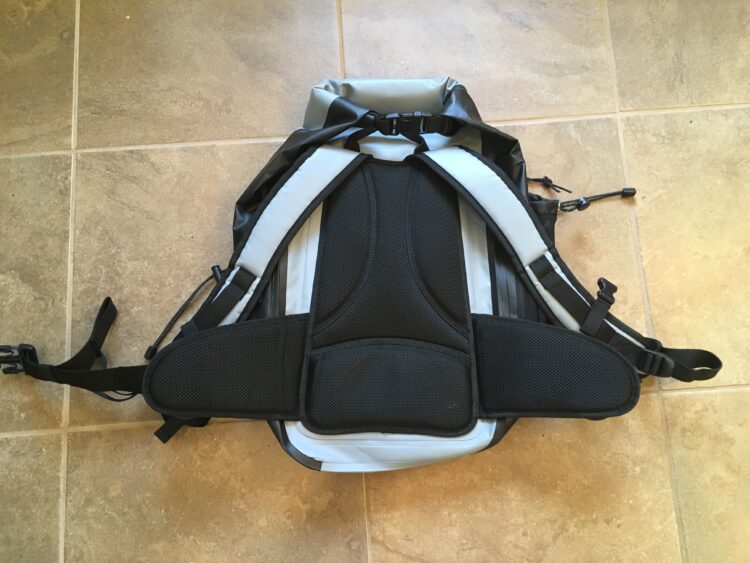
On the right side of the bag, as seen from the rear, there are three rows of three PALs webbing sewn to the bag, along with a sewn on metal bottle opener. It is worth noting that everything sewn to the outside of the bag does not go through to the inside of the bag itself, there fore there is no issue with leaks from any of the features that have been sewn on to the outer portion of the bag. While there is no issue with the PALs webbing, there is an issue with it not being sewn to the proper specifications and dimensions required for PALs. This means that if a MOLLE type pouch or accessory were to be attached to the bag, it would be difficult and or impossible to properly mount that item. The presence of the sewn on bottle opener should serve as an indicator of the recreational nature and intended use of the bag and may be of use to some.
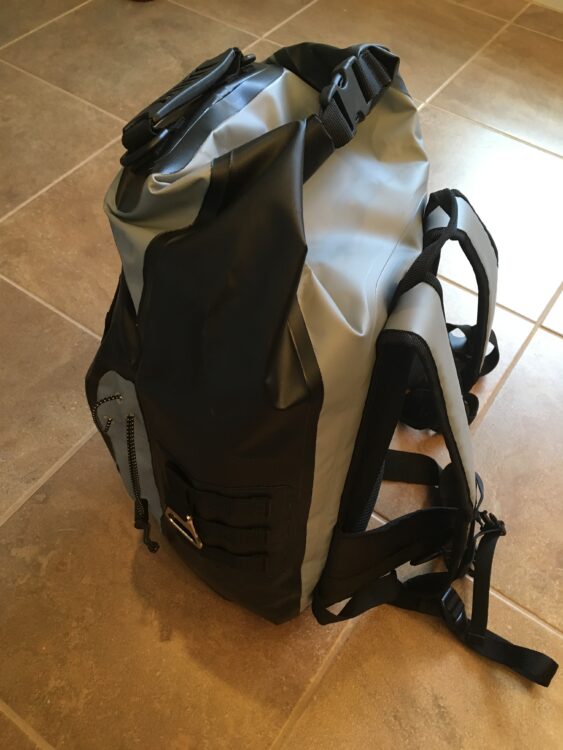
On the left side of the bag, as seen from the rear, there is a mesh water bottle bag with an elastic mouth and bungee cord and cord lock closure system. While this is a welcome feature, it falls short in that the mouth of the pouch is unable to accommodate a Nalgene water bottle or even many plastic water bottles commonly found in stores. Anything slightly larger than a soda can in diameter will likely not fit inside the pouch. This limitation pretty much renders the pocket useless for carrying most liquid containers.
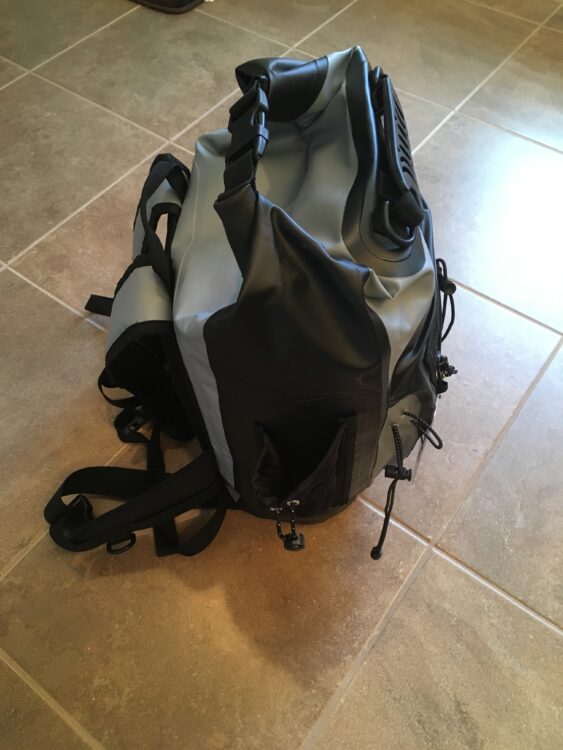
On the center rear of the bag, as seen from the rear, there is a mesh pocket with a zipper and an outer bungee cord system that will allow for the storage of items that need to be accessed quickly but don’t need protection from water. The pocket is large enough to hold medium to small items, such as sun tan lotion bottles, wet swim trunks or similar items. The bungee cord over top of the pouch has a cord lock that can be cinched down to hold anything from a jacket to a towel if needed.
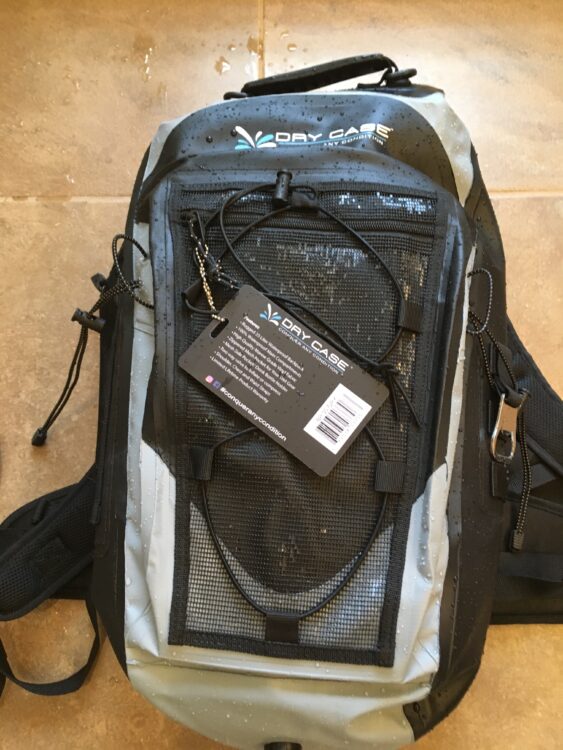
Just to the left and right of the center pocket, as seen from the rear, there are additional bungee cords that feed through three grommets, that form a loop, that can be used to attach or cinch down additional items horizontally across the bag. Again, I question the usefulness of these bungees, but perhaps they may prove useful to others.
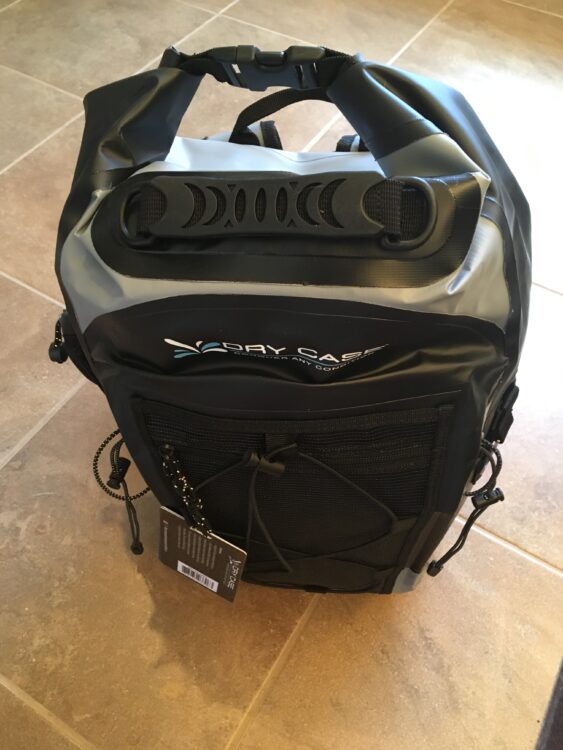
At the top of the bag, there is a rubberized webbing handle with a small plastic D ring on each side. Much like a grab handle found on most bags these days, it serves the same purpose and the D rings allow for attaching ID tags or smaller items that can be clipped onto them. At the very top of the bag is the mouth of the bag itself. There is webbing sewn to the outside portion of the bag on both sides with a fastex type buckle sewn on each end of the bag that is designed to be folded down three times on itself and then the male and female portions of the fastex clip mated together in a manner similar to other dry bags on the market. This is a proven design used in industry and proved to work fine on this bag.

Lastly, on the bottom of the bag, on the right rear side is a circular plastic two way valve about the diameter of a quarter, that can be used for inflation/deflation and or drainage of the bag. It is opened and closed by turning the valve clockwise/counter clock wise about a quarter turn. While the presence of a relief valve is indeed a good feature to have, the one used on the Masonboro bag has two issues. The first is that it is on the bottom of the bag, which will see the most wear and also tends to collect sand/dirt/debris which can make rotating it open/closed more difficult than it needs to be and in the worse case scenario, it could become inoperable. The better placement of this valve would be somewhere along the body of the bag where this is less likely to happen. DRY CASE makes the Black Deca bag with this same valve on the body of the bag, which makes a lot more sense. The second issue is that if it is be used to inflate the bag for positive buoyancy it needs to have a tube type valve stem, similar to the ones you have no doubt seen airline attendants point to when demonstrating how to inflate your emergency life vest in the event of a water landing or on SCUBA diving buoyancy Compensators and Military grade dry bags. The current valve is a weak link to what would be an otherwise decent dry bag.
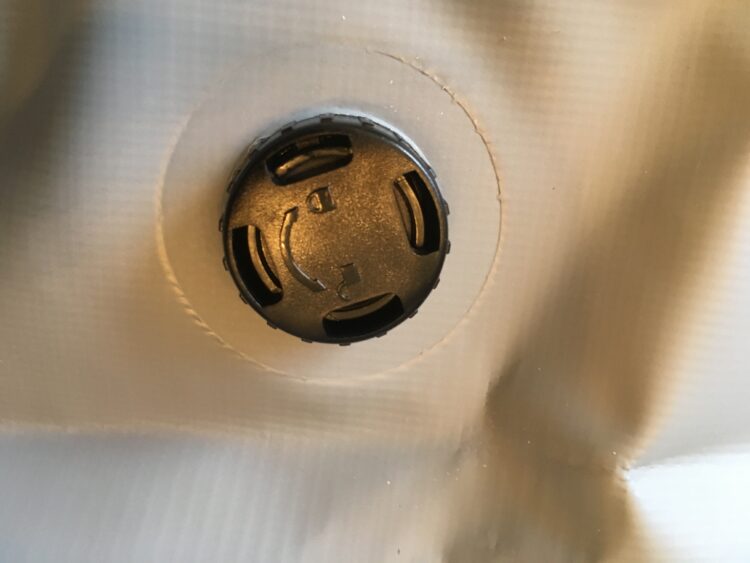
The bag itself and the interior are well made using a marine grade waterproof material DRY CASE calls Gnarwall. The seams are all welded together very cleanly and are of a high quality finish. The interior of the bag has a medium sized zippered waterproof pocket that would be ideal for storing a wallet, phone, cash, keys and other larger sensitive items that you would want to separate from the main compartment of the bag. Also inside the bag is a small section of hook Velcro and a small zippered fabric bag with loop Velcro on it that can be removed, that DRY CASE calls a Velcro wallet. The bag on its own, is what is the accepted and expected norm for a dry bag, minus the questionable quality and location of the relief valve.
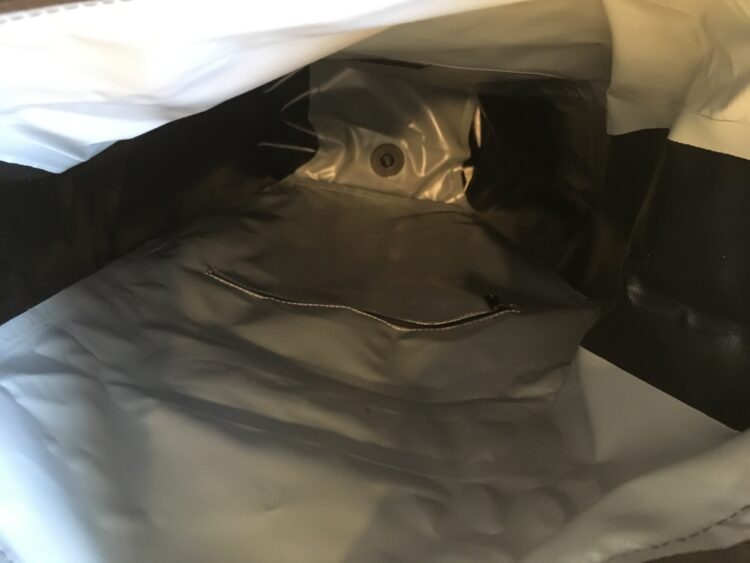
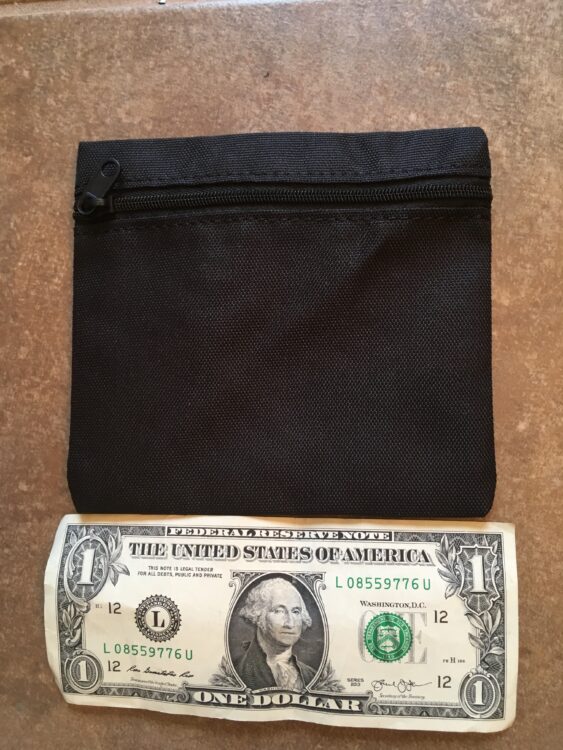
Features:
- 100% Waterproof Compartment
- 35 Liters of Storage
- High Quality Marine-Grade Waterproof Gnarwall Material
- 2-Way Purge Valve for Inflation/Compression
- Drink Holder
- Bottle Opener
- Bungee Straps
- Internal Zippered Pocket
- Removable Internal Velcro Wallet
- Padded Lower Back Support
- Tie Downs and Front Straps
- Roll-Down Closure
- Durable Rubber Top Hold Handle
- Webbing to Secure Carabiners on Side
- Dimensions: 28″ x 15″ x 9″
- Weight: 3lbs

Conclusion:
I was able to fully submerge this bag and the contents remained dry, but that is what is expected from any dry bag. I was hoping that this bag would grow on me more during the time I used it. However, the overall product itself falls short in that it feels like the additional features external of the bag were not well planned or thought out and most would be of minimal use to most users due to the limitations described above. At this mid to high end price point, this is a decent product that could be a great professional grade product if DRY CASE were to make the needed adjustments and improvements to the exterior features of the bag, even if it means a slight price increase. Short of that, the Masonboro bag should be considered a light recreational use dry bag for casual days at the beach, water park, pool or float down the river.
Cost: 3
Comfort: 3
Durability: 4
Functionality: 4
Weight: 3
Overall Rating: 3.4/5
The scale is defined as:
(1): Poor/unacceptable. Worse than expected, or desirable; of a low or inferior standard or quality.
(2): Fair. In conformity with reasonable expectations, but in comparison to competitors is may be deficient
(3): Average. Common item; item neither lacks from or is superior than a competitors item.
(4): Good. The item is desirable and has qualities that excel in comparison to a competitors item
(5): Excellent. Outstanding, possesses superior quality; remarkably good
https://www.audible.com/pd/Sci-Fi-Fantasy/These-Dead-Lands-Immolation-Audiobook/B075MP594Q?qid=1510323757&sr=1-1&ref=a_search_c4_1_1_srTtl#customer-reviews
Material Disclosure
I received this product as a courtesy from the manufacturer via Spotter Up so I could test it and give my honest feedback. I am not bound by any written, verbal, or implied contract to give this product a good review. All opinions are my own and are based off my personal experience with the product.
*The views and opinions expressed on this website are solely those of the original authors and contributors. These views and opinions do not necessarily represent those of Spotter Up Magazine, the administrative staff, and/or any/all contributors to this site.
